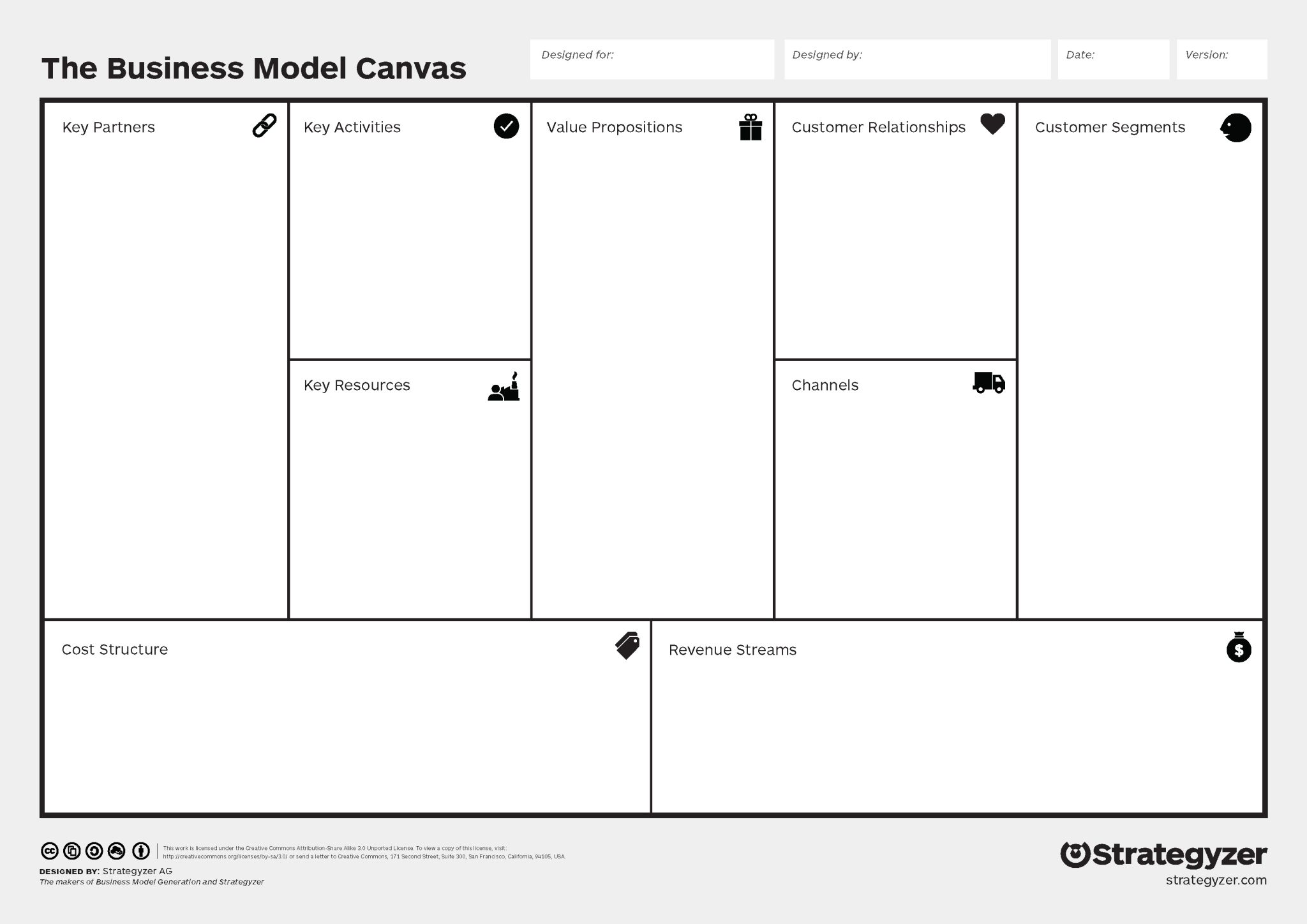Business Model Canvas
The Business Model Canvas is a powerful strategic management tool that helps businesses understand, analyze, and communicate their business model effectively.
By following a structured approach, the Business Model Canvas enables entrepreneurs and professionals to gain valuable insights, identify improvement opportunities, and make informed decisions.
What it is for
The Business Model Canvas serves as a concise framework for describing, designing, and evaluating a business model. It enhances communication and alignment among stakeholders within an organization, facilitating meaningful discussions about the various components of the business model.
Why you should use it
Utilizing the Business Model Canvas offers several advantages, including:
- Holistic View: Gain a comprehensive understanding of your business model by examining its key elements in a structured manner.
- Risk Identification: Identify potential risks and challenges associated with your business model, allowing proactive mitigation measures.
- Opportunity Exploration: Discover areas for innovation and explore new opportunities within your business model.
- Strategic Decision Making: Evaluate the interdependencies between different elements of the business model to make informed strategic decisions.
- Collaboration and Alignment: Foster collaboration and alignment among team members and stakeholders through a shared visual representation of the business model.
Steps to complete the canvas
- Value Propositions: Define the unique value that your product or service offers to each customer segment.
- Channels: Determine the channels through which you will reach and interact with your customers.
- Customer Segments: Identify the different groups of customers or market segments that your business aims to serve.
- Customer Relationships: Specify the type of relationships you intend to establish with your customers (e.g., personal assistance, self-service, co-creation)
- Key Activities: List the key activities that are essential for delivering your value proposition.
- Key Resources: Identify the resources (physical, intellectual, human, or financial) required to perform key activities effectively.
- Key Partnerships: Determine the external entities or organizations that you need to collaborate with to operate effectively.
- Revenue Streams: Identify the ways in which your business generates revenue from each customer segment.
- Cost Structure: Identify the costs associated with running your business model.
- Key Metrics: Define the key performance indicators (KPIs) that will help you measure the success of your business model.
By following these steps and completing the Business Model Canvas, you can rapidly gain a comprehensive understanding of your business model, identify areas for improvement or innovation, and effectively communicate your business strategy to stakeholders.
The Business Model Canvas was developed by Alexander Osterwalder and Yves Pigneur. To learn more about this powerful tool, refer to their book “Business Model Generation: A Handbook for Visionaries, Game Changers, and Challengers.”
